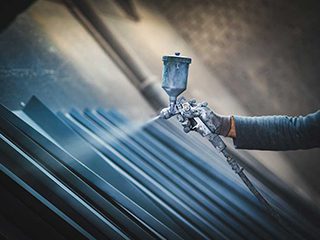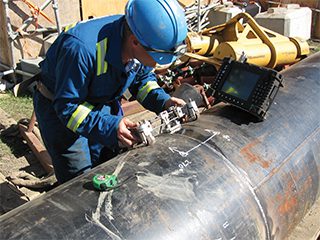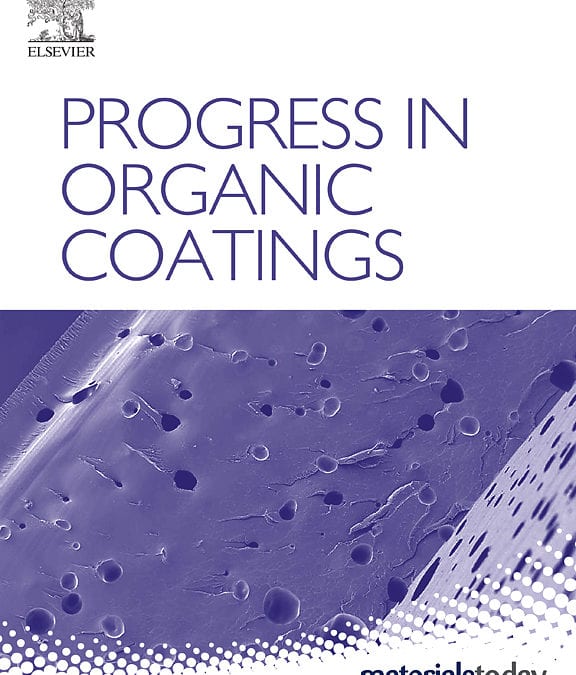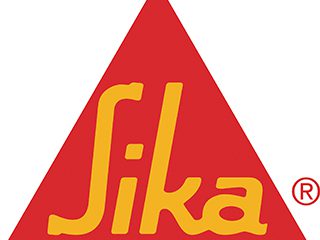
Fellows Corner
In this issue, we have three articles from experienced Fellows who have made a significant contribution to the understanding of corrosion and its prevention. The first follows on from the topic in the last issue, where Brenda Peters discusses the application of protective coatings, and what needs to be done beforehand. Secondly, Joseph Itodo Emmanuel describes the corrosion protection of buried structures, and finally James McLaurin explains how the design of a steel structure can influence its protection, specifically from bi-metallic corrosion problems.
Corrosion protection by protective coatings
The institute of Corrosion is split about 50:50 between Engineers and Scientists, and across several different disciplines, the common ground is in Corrosion Prevention, and there are many overlaps within the fields of expertise. Following on from the Fellow’s Corner column in last issue of Corrosion Management, the emphasis of this article is on paint as a means of corrosion protection. Paints generally falls into two categories, decorative and industrial (protective), and paint manufacturers have tended to split their manufacturing and R&D, specialising in one or the other. However, decorative paint can be protective and industrial paint can be decorative. When we talk about “Industrial” or protective paints, we are usually referring to the prevention of steel from rusting. These paints are the most sophisticated technically engineered paints, but they tend to be applied by the least qualified painters. This is why the Correx ICATS (Industrial Coating Applicator Training Scheme) programme was developed to improve the quality and longevity of the finished product. In addition, many manufacturers will run their own training schemes on how their particular product should be mixed and applied and the limitations of the ambient conditions. Paint inspectors are also employed to ensure that the paint is stored and applied correctly, and the surface preparation is to the specified standard. These paint inspectors are normally trained by ICorr or NACE or both, so what can go wrong?
When applying paint to new steel a primer coat is applied to promote adhesion and protect the surface against corrosion, however preparation of the steel prior to painting is paramount. When investigating paint failure, it is a bit “chicken and egg”, did the steel corrode and push off the paint or did the paint fail allowing the steel to corrode.
When the steel leaves the mill, it will have some level of millscale on the surface which is blue/black in colour, although this surface can look nice and smooth and suitable for painting, this millscale is however only loosely adhered to the underlying steel, and will scale off after painting. This can often be seen on hand rails and post made from tubular steel which has not been blast cleaned.
To prepare steel for painting, several methods can be used, which depend to an extent on the end use of the material, for example, steel can be pre-treated to inhibit rust and passivate the surface: examples of which are in hot dip galvanising, where the steel is “pickled” in acid to remove rust and millscale then immersed in a vat of molten zinc, which forms layers of zinc alloys at the interface with the steel, culminating in a layer of pure zinc on the surface, and this can be difficult to paint as it is smooth and can result in poor adhesion. It can be left to weather so that zinc oxides form on the surface resulting in roughening which provides a key for the paint to adhere to, or alternatively a variety of primers are available which etch into the surface. These include, acid etch epoxy primers and more the commonly used “T Wash”, a mordant solution originally developed by British Rail, which is a phosphoric acid solution containing alcohol and copper carbonate as an indicator. The solution reacts with the surface of the zinc and a black coloration is formed, anywhere it doesn’t react and show this colour change can indicate previous contamination on the galvanising and these areas need to be washed, degreased and retreated.
Steel can be treated with hot metal spray (Thermal Spray) as an alternative to hot dip galvanising creating an anti-corrosive layer with a profiled surface to which paint can be applied. This is normally zinc or aluminium and is often used for high temperature conditions.
Similarly, steel can be “phosphated” by dipping in a bath containing a solution of zinc in phosphoric acid forming a thin layer of zinc phosphate on the surface, and which is commonly used in the automotive industry. This can then be undercoated and a decorative finish coat applied on top. The paint can be applied electrostatically in a powder or liquid form then heat cured or applied by spray, roller or brush.
However, in the heavy duty protective coatings field, steel supplied from the factory has to be blast cleaned to remove all millscale and rust, and then primed within a short period of time to prevent flash rusting from forming on the surface. Epoxy primers are commonly used, but these need a good steel surface profile to form a key to ensure good adhesion, so the profile of the blasted steel needs to be checked before application of the paint. As epoxies cure by chemical reaction, they will continue to cure over time until they become fully cross linked, and at this stage they become unsuitable for overcoating, so the manufacturers’ overcoating times must be adhered to enable the following coats to adequately bond with the surface of the epoxy. If the overcoating time is exceeded, these coats will eventually lose adhesion at the interface with the epoxy, and detach. Epoxies, like most protective coatings, are also sensitive to ambient conditions, they won’t normally cure if it is too cold, and if there is any condensation on the steel, or if they get wet before they cure can prevent them from curing properly. For example, with amine cured epoxies, the amine can react preferentially with moisture resulting in undercure, and if moisture gets on the surface before they
are fully cured, amine bloom can occur resulting a dull and chalky surface. Therefore, attention to temperature and dewpoint are very important. Epoxy coatings have been developed which are moisture tolerant and some can even be applied underwater and are utilised for subsea repairs.
When epoxy primers are used then these need to be finished with a decorative acrylic or polyurethane top coat as these are UV resistant – epoxies yellow with sunlight and colours fade through chalking. Acrylics retain their colour longer. Similarly, for alkyd based systems, urethane alkyd top coats are used as these are tougher and have greater longevity.
Historically red lead primers were used, although these were phased out in the late 1960s due to toxicity and leaching they can still be found on many steel structures, and cause problems when it comes to maintenance (full containment and special disposal are necessary). These have been replaced by zinc rich or other anticorrosive primers.
Similarly, some steel structures have existing coats of chlororubber or acrylated rubber, which have good corrosion resistance and longevity. However, these can also pose problems during maintenance painting, as they are incompatible with solvent based coating like epoxies, and cannot be refurbished with anything else.
Whichever paint system is chosen it is advisable to use material supplied by the same manufacturer as these are developed to be compatible with each other, and if a failure should occur then there is less anomalies to be considered. Manufacturers will offer a full paint system with primers undercoats and finish coats, for a specific end use.
Brenda Peters

Ask the Expert
Question:
At a recent meeting with a client a question was raised – How does my company find a corrosion engineer who has a broad background over a range of disciplines? They reported that they have tried to recruit, but can only find people with specialist training in limited areas. To cover all our corrosion needs, we would need to hire a paint inspector, a welding inspector, a CP engineer, a metallurgist, a concrete specialist and a water treatment engineer. Surely there must be people who have a basic knowledge of these disciplines who could carry out day to day work and be able to call in specialist experts when needed? AN
Answer:
The question is not unusual in the current economic situation. Many companies know that they need experts for some jobs but require a more generalised approach to everyday situations. At one time, larger companies ran training programmes for new engineers, to enable them to become familiar with the company’s products and processes, and to provide them with a broad experience of the various corrosion challenges that they would meet during their working lives. Often this was an informal apprenticeship, with the new starter shadowing an experienced engineer and gaining knowledge and expertise over time, perhaps a couple of years. A similar situation may be like that of a junior doctor, who has the opportunity to work in many different healthcare situations before deciding on a specialism.
The result of the informal apprenticeship type process would be an engineer who understood the corrosion aspects of the operation of multiple areas of that plant and who was able to use that knowledge for the benefit of the company at other sites and with other processes. Unfortunately, the need for greater productivity and profits, in combination with the drive towards minimal workforce numbers, has significantly reduced the opportunity for the “grow your own corrosion engineer” approach in all but the largest or most determined companies.
In parallel, there has been an increased requirement for new starters being able to show “paperwork” which demonstrates training and competence in specific areas. Whilst this has reduced the number of “corrosion cowboys” in the industry, it has also resulted in many good corrosion engineers with long term general experience, being unable to “prove” their knowledge. People who went through the on-the-job multi-discipline corrosion training were not provided with a certificate, and after a number of years of experience when they may be looking to change company or diversify out of a career limited industry, are finding it difficult to convince potential employers (who now need certificates as proof of knowledge) to hire them.
In turn, these companies are finding that most of the potential new employees are often qualified only in one specific discipline and therefore they may need to hire several people to cover the range of job requirements – the problem of the client at the start of this article.
One option for the company, is to hire specialist corrosion expertise when it is needed, but again this can be a challenge. How does the company know what sort of expert they need and what happens if the problem covers too many aspects for the expert? What if they need a person with a general corrosion knowledge? Of course, there are large consultancy companies which employ several specialists and can match the enquirer with a person in the right specialism. But again, what happens if a more lateral approach to the corrosion problem is needed?
As one semi-retired senior corrosion engineer, with a lifetime of broad experience, said, people like us are literally dying out. I need to recruit my replacement but how?
To meet the needs of individuals who want to increase their general corrosion knowledge or have their experience recognised in a paper format, and companies who want to take on a corrosion engineer with a certificate demonstrating a broader background knowledge, the Institute of Corrosion has developed a Fundamentals of Corrosion for Engineers (FOCE) course. This course aims to be a solution to fill both the general corrosion engineer’s certificate gap and an employers need to find a general corrosion engineer with a relevant certificate of knowledge.
Starting with the very basics of the corrosion reactions, the course builds up over an intensive week to cover a wide range of corrosion situations and industries. The classroom based FOCE course aims to provide the attendees with a general understanding of the common corrosion factors which link apparently different industries. Whilst not a substitute for several years of hands-on training, it gives the participants an awareness of a range of corrosion challenges and solutions across common industries, thus providing a background knowledge of fields that people may wish to investigate further, and work in, as part of their career journey.
In addition, passing the examination at the end of the course provides the successful candidate with a ‘Certificate of Achievement’ from a globally recognised Corrosion Institute. The certificate demonstrates the broader corrosion knowledge that some employers are seeking when recruiting a general corrosion engineer and provides confidence for the employer that the new engineer does have a wider understanding of corrosion situations. The experienced corrosion engineer will also gain relevant paperwork which both backs up their knowledge and fits company recruitment policies.
FOCE courses are held regularly (covid restrictions permitting) with dates and locations being listed on the ICorr website at www.icorr.org/training-qualifications-2-2. The next course is on 15 – 19th November 2021.
Jane Lomas, Amtec Consultants Ltd

Industry News
A series of environmental-friendly polyvinyl butyral/phenol formaldehyde resin (PVB/PF) composite coatings with various PF contents were prepared by a solution blending method. The tribological and anticorrosion properties of the composite coatings as well as the influence of PF content were studied.
The results showed that the addition of PF can significantly improve the wear resistance of the PVB coating, and electrochemical impedance spectroscopy (EIS) results showed that the corrosion resistance of the composite coatings can also be significantly improved after immersing in 3.5 wt% NaCl aqueous solution for 30 days.
The researchers, claim that the good tribological and anticorrosion properties of composite coating are due to the uniform and dense structure formed by PVB and PF, which has good flexibility, high mechanical strength and excellent barrier properties. The study was published in Progress in Organic Coatings, Volume 158, September 2021.
Double layer powder coating to enhance corrosion protection
A novel epoxy resin modified PVC powder coating was used as a primer and pure PVC powder coating as a topcoat, for the corrosion protection of steel in a marine environment.
Test results revealed that the material obtained the highest adhesion and salt spray resistance when the epoxy content in the primer was 50 wt%. In contrast to the pure epoxy coating and the pure PVC coating, the EP-PVC coating exhibited an excellent corrosion resistance, owning to the good adhesion of the composite primer and the good barrier and corrosion resistance of the topcoat.
The study was published in Progress in Organic Coatings, Volume 158, September 2021.

Industry News
Sika has agreed to sell its European industrial coatings business, based in Germany, to The Sherwin-Williams Company. The transaction is expected to be completed at the beginning of 2022.
The transaction includes the European industrial coatings business with the main location and manufacturing facility in Vaihingen, Germany. The product range encompasses anticorrosive and fire protection coatings which are mainly sold in Germany, Switzerland, Poland, and Austria.

Industry News
The Winoa group, a worldwide supplier of abrasive media for shot blasting operations, has announced the group’s 60th anniversary, as well as the largest steel media factory in the world, the Cheylas factory in Isère, France.
The company, formerly known as Wheelabrator Allevard, currently has more than 800 employees, is established on four continents, with a total of nine factories, four test centres; and three research centres.
According to the company, for this 60th anniversary, they are taking the opportunity to implement a renewed and improved growth plan, as well as the development and marketing of new services and products.
The steel shot produced by Winoa under the name “W Abrasives®” is used in the manufacturing and processing of thousands of metal products and articles.
For more details on WAbrasives, see, www.wabrasives.com






